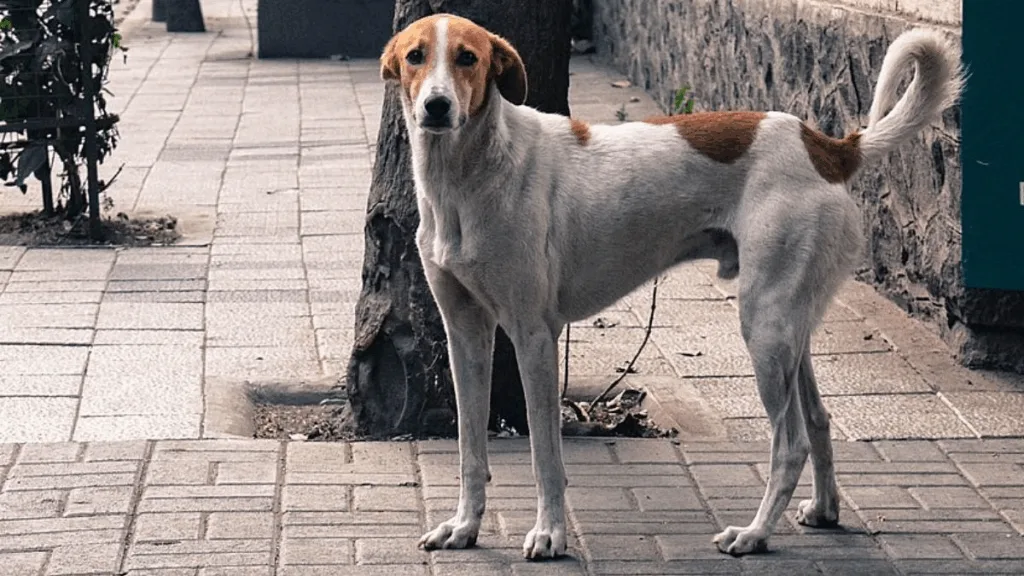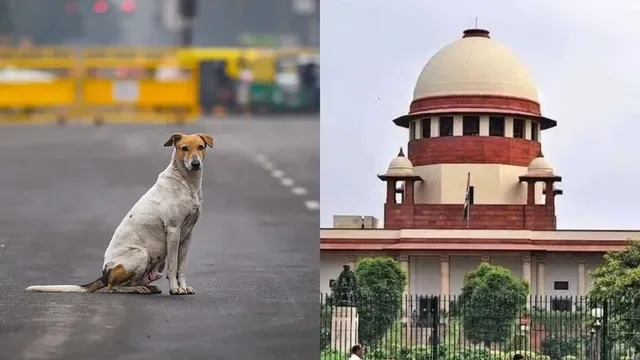In a landmark decision that’s set to reshape animal management across India, the Supreme Court has directed the removal of stray dogs from key public spaces, including schools, hospitals, bus stands, railway stations, and sports complexes, citing the alarming rise in dog-bite incidents across the country. Here’s everything you need to know about this groundbreaking verdict.
Table of Contents
📋 Supreme Court Order: Overview
| Aspect | Details |
|---|---|
| Date of Order | November 7, 2025 |
| Bench | Justices Vikram Nath, Sandeep Mehta, NV Anjaria |
| Locations Covered | Schools, Hospitals, Bus Stands, Railway Stations, Sports Complexes |
| Implementation Timeline | 8 weeks for fencing; 3 months for inspections |
| Scope | All States & Union Territories |
| Key Directive | Dogs cannot be returned to same location after sterilization |
🏛️ Understanding the Supreme Court’s Decision
What Does the Order Say?
The Court has mandated that local authorities be responsible for relocating stray animals to designated shelters after they are vaccinated and sterilised, in accordance with the Animal Birth Control (ABC) Rules. This isn’t just another directive—it’s a comprehensive framework to address a crisis that’s been brewing for two decades.
A bench of Justices Vikram Nath, Sandeep Mehta, and NV Anjaria stated that all these institutions and places must be properly fenced to prevent the entry of stray dogs. The court emphasized that allowing dogs to return would “frustrate the very purpose” of securing these premises.

Why This Matters Now
The timing of this order isn’t coincidental. The issue of stray dogs gained national attention when the Supreme Court took suo motu cognizance of the problem on July 28, following a Times of India report titled “In a city hounded by strays, kids pay price”. The alarming statistics speak for themselves—according to government data, there were over 37 lakh reported dog bites across the country, with Delhi alone recording 25,201 incidents.
🎯 Key Provisions of the Order
Mandatory Fencing & Infrastructure
District Magistrates have been asked to ensure that all schools, colleges, hospitals, sports facilities, and government institutions are properly fenced to keep stray dogs away. They have also been ordered to conduct regular inspections. Every institution must appoint a nodal officer responsible for surveillance and maintenance.
Relocation, Not Release
Here’s the crucial difference from previous orders: The Court’s directive includes an explicit order that stray dogs, once picked up from public spaces, must not be returned to the same location. This marks a significant shift from the catch-neuter-vaccinate-release (CNVR) approach that was previously mandated.
Beyond Dogs: Cattle on Highways
Extending its directions beyond stray dogs, the apex court also ordered the removal of stray cattle from highways, expressways, and major roads, citing the risk they pose to commuters. The National Highways Authority of India (NHAI) must establish dedicated patrol units and helpline numbers for reporting stray cattle.
⚖️ The Controversy & Criticism
This order hasn’t come without its share of debate. Animal welfare advocates and even former Union Minister Maneka Gandhi have raised concerns. Critics argue that relocation contradicts the ABC Rules and could aggravate the problem rather than solve it. However, the court has made it clear that this decision came after thorough deliberation, not “momentary impulse,” addressing a serious public safety concern that authorities have failed to tackle for over two decades.
📅 Timeline & Accountability
- 8 weeks: States must ensure proper fencing of all institutions
- 3 months: Local bodies must conduct regular inspections
- January 13, 2026: Next hearing with mandatory compliance affidavits
- Immediate: States like West Bengal and Telangana (earlier excluded) must now comply
On October 27, the Court summoned the Chief Secretaries of all states and Union Territories, excluding West Bengal and Telangana, for not filing affidavits detailing the steps taken to implement the ABC Rules.

🔗 What This Means for You
If you’re a parent, commuter, or institution administrator, this order brings tangible changes. Educational institutions must now prioritize animal-proof fencing, local authorities must establish functional shelter systems, and citizens can expect safer public spaces. However, this transition requires cooperation—proper shelter infrastructure, adequate funding, and humane treatment of relocated animals.
For more information on animal welfare laws in India, visit the Ministry of Fisheries, Animal Husbandry & Dairying.
Stay updated on the latest legal developments and court orders at TechnoSports India News and Supreme Court of India Updates.
❓ Frequently Asked Questions
Q1: Will all stray dogs be removed from residential areas too?
No, the current order specifically targets public institutions like schools, hospitals, bus stands, railway stations, and sports complexes. Residential areas are not included in this directive. The dogs removed from these designated public spaces must be sterilized, vaccinated, and relocated to registered animal shelters, but not returned to the same location. However, the court has expanded the scope to include all states and Union Territories, ensuring a national policy framework. Local authorities are responsible for implementing this order within the specified eight-week timeline for proper fencing and infrastructure development.
Q2: How will the relocated stray dogs be cared for in shelters?
The Supreme Court’s order mandates that all stray dogs must be moved to designated, registered shelters where they will be properly cared for after sterilization and vaccination. Local self-government institutions are responsible for establishing and maintaining these shelters in accordance with the Animal Birth Control (ABC) Rules, 2023. Each shelter must have adequate facilities, food, water, and medical care. However, animal welfare advocates have raised concerns about whether existing shelter infrastructure is sufficient to handle the volume of dogs that will need relocation. The court has ordered states to file compliance affidavits detailing their shelter capacities and care protocols by the next hearing on January 13, 2026.








